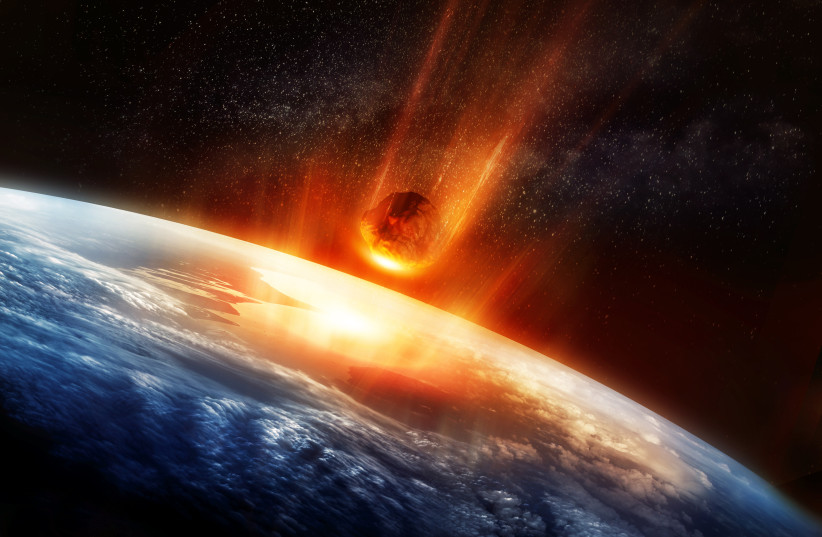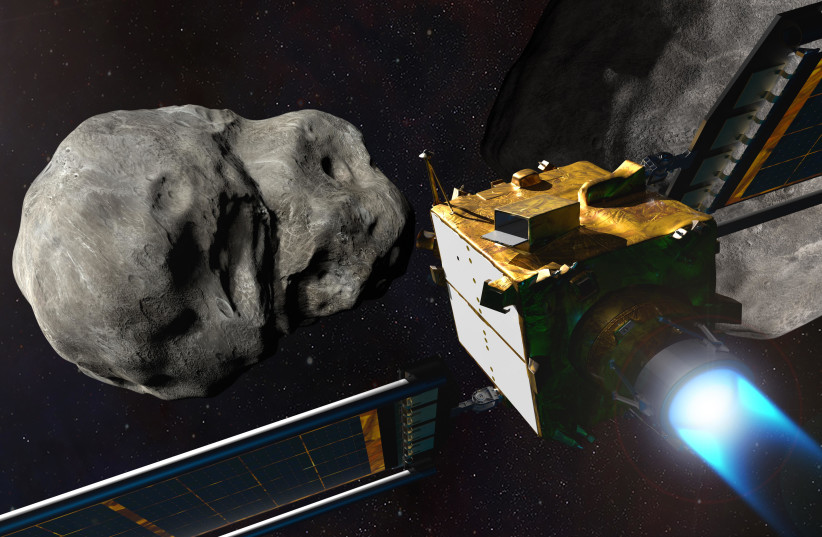New asteroid the size of 27 pandas could hit the Earth in 2046 - ESA, NASA

Newly discovered asteroid 2023 DW has a notable nonzero chance of hitting the Earth in 2046, but will it? And will it be bad? Asteroid experts discuss the findings.
An asteroid the size of over 27 pandas has recently been discovered by astronauts, and it currently has one of the highest chances of impacting the Earth on Valentine's Day, 2046, according to the European Space Agency (ESA) and NASA's asteroid tracker.
The asteroid has been designated 2023 DW, according to according to the Center for Near-Earth Object Studies (CNEOS) at NASA's Jet Propulsion Laboratory (JPL).
Current projections by the ESA give the asteroid a 1 out of 625 chance of impacting the Earth, with other estimates placing this date of impact on February 14, 2046 – Valentine's Day.
In addition, asteroid 2023 DW is ranked a 1 on the Torino scale, a measure from 0-10 used by NASA to determine impact probability. This rank may seem low, though it is also the only asteroid on NASA's Sentry Risk List with a rank above 0.
How big is the asteroid?
Asteroid 2023 DW is estimated to be around 50 meters wide.
To put this size into perspective, the average adult male panda bear can grow to a total length of around 1.8 meters. That means this asteroid is just a bit bigger than 27 pandas, should those bears be laying down in a row, front and back legs fully extended out.
Pandas are rather short as far as bears are concerned, and while they may seem like rather rotund ursine specimens, they actually only weigh around 220 kilograms each. Odds are, asteroid 2023 DW is far heavier than even 27 pandas.
Is the asteroid going to hit the Earth?
This is the big question.
Asteroid 2023 DW is an Aten-class asteroid, meaning it spends most of its time between the Earth's orbit and the Sun, rather than outside the Earth's orbit, and only rarely crossing over.
These asteroids can be difficult to spot, since they usually would only pass us during the daytime, when visibility is poor.
Its recent discovery on February 26, 2023, was a rarity as a result, and the odds aren't impossible that it could hit us in the future.
But don't worry too much about your Valentine's Day plans for 2046 because while asteroid 2023 DW has a non-zero chance of impacting us at the time of writing, the chance is still very close to zero.
Currently, it has an approximately 99.8% chance of missing Earth entirely. But either way, that number is likely to change soon.
Speaking to The Jerusalem Post, Dr. Alain Maury, a veteran French astronomer based in Chile who discovered asteroid 2023 DW as part of his asteroid search program, explained exactly how the asteroid was found and what we need to know about it.
Maury left academia 20 years ago and runs San Pedro de Atacama Celestial Explorations (SPACE), an astronomy tour center in the Atacama desert in Chile. So far, he has been very successful in spotting asteroids.
"Most asteroid discoveries are made using the really big telescopes, like 1-8 meters," he explained. Ours are just 20 centimeters. But we have a camera with high sensitivity and very sophisticated software. The other guys [NASA, the ESA] still use software from the 1990s, we've been using software made in 2021 and we have better detection rates."
His system detects asteroids automatically and then checks to see if the asteroid is something that's already been detected or is a satellite – in particular, he notes Elon Musk's satellites have been a major source of false positives, as has NASA's James Webb Space Telescope.
This is then verified using a stronger but smaller telescope for confirmation. Afterward, the data is sent to the Minor Planet Center, where it is made public and scanned by the automated softwares of groups like NASA and the ESA, and then other scientists from the dozens of other asteroid monitoring efforts add in their own data and observations.
"I've been in this business for quite a long time," Maury said, having discovered dozens of asteroids and comets in his career, his first Earth-orbit-crossing asteroid having been spotted in the 1980s. "Our program is the fourth largest in the world, and the three largest are NASA programs. So our technique is proven effective and is being adopted elsewhere."
More data will be added to better calculate the trajectory of the asteroid in future observations. However, this has been made difficult in this particular case due to the full moon, which is bright and can obscure visibility.
From what we do know so far though, asteroid 2023 DW will make a close pass of the Earth in 2026, possibly coming in as much as only 75,000 kilometers way from the Earth – a very close distance, much closer than the Moon's 384,000-kilometer distance.
More data can be extrapolated in this future flyby if more can't be gathered soon.
But what if the asteroid does impact the Earth?
"If it does impact in 2046, well, I'll probably be dead by then anyway," Maury joked. He then clarified that the chances are really low, and in terms of actually causing serious damage to human life, the chances are even lower.
"Seventy percent of the time, asteroids that impact the Earth end up hitting the ocean because most of the Earth is ocean," he said. "The chance it could hit a city is very small. But it would hit with four megatons of TNT, more than the nuclear bomb dropped on Hiroshima. So it could be bad if it hits, and it's better if it just passes through."
He added that most asteroids he spots have no chance of hitting the Earth. In fact, that very same day, he discovered five other asteroids, some of which have been designated as potentially hazardous, but none with an estimated chance of hitting the Earth.
"But it's nice to know and make an inventory of these asteroids because an asteroid impact is possibly the only basic catastrophe you can predict the precise time, location and level of destruction well in advance."
Do we have any way to stop an asteroid from hitting the Earth?
But should the worst-case scenario happen and it looks certain that asteroid 2023 DW is going to impact the Earth, will humanity have any way to stop it?
The answer is almost certainly yes. Scientists working in planetary defense have been working hard to do just that.
The most notable effort in this field has been NASA's Double Asteroid Redirection Test (DART) Mission, which was launched to crash into the faraway asteroid Dimorphous in the Didymous system in order to see if its trajectory would be altered.
To put it simply, they punched an asteroid with a spacecraft to make it move, changing its orbital trajectory. And it worked.
A recent study has also reaffirmed its success, with scientists now certain they could adequately prevent an impact from a dangerous asteroid, provided we have a few years' notice.
One of the researchers who determined DART's effectiveness in follow-up studies, Dr. Agata Rożek of the University of Edinburgh, told the Post that NASA's landmark planetary defense mission is a proven method to stop something like 2023 DW.
"I think the smashing success of DART shows we have a fighting chance of deflecting small asteroids, and 23 years seems like enough warning time for an asteroid this size," Rożek said.
"Of course, we would need to study 2023 DW to understand how similar it is to Dimorphos, and how the outcome of DART impact would scale to plan an adequate response. Fortunately, we have eyes on the skies and telescopes and tools to do that."
Jerusalem Post Store
`; document.getElementById("linkPremium").innerHTML = cont; var divWithLink = document.getElementById("premium-link"); if (divWithLink !== null && divWithLink !== 'undefined') { divWithLink.style.border = "solid 1px #cb0f3e"; divWithLink.style.textAlign = "center"; divWithLink.style.marginBottom = "15px"; divWithLink.style.marginTop = "15px"; divWithLink.style.width = "100%"; divWithLink.style.backgroundColor = "#122952"; divWithLink.style.color = "#ffffff"; divWithLink.style.lineHeight = "1.5"; } } (function (v, i) { });



